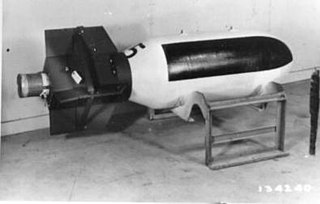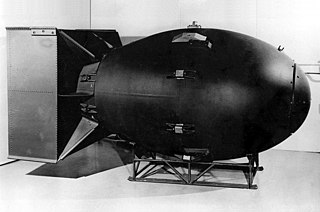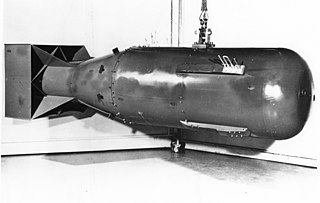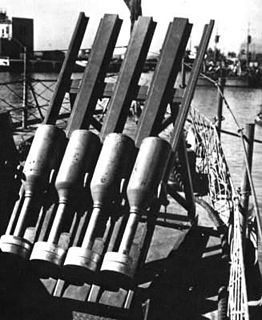 W
WThis is a historic (index) list of U.S. Army weapons and materiel, by their Standard Nomenclature List (SNL) group and individual designations — an alpha-numeric nomenclature system used in the U.S. Army Ordnance Corps Supply Catalogues used from about 1930 to about 1958. The July 1943 Ordnance Publications For Supply Index – OPSI – (page2) explains that the "Index of Standard Nomenclature Lists (...) covers – by groups, and subdivisions of groups – all classes of equipment and supplies, assigned to the Ordnance Department for procurement, storage, issue, and maintenance." The designations in this Wikipedia list represent so-called "major items". For each of the major items, there were separate, designated "Standard Nomenclature Lists" — extensive parts catalogs for supply and repair purposes.
 W
WThe 2.25-Inch Sub-Caliber Aircraft Rocket, or SCAR, was an American unguided rocket developed by the United States Navy during World War II and used for sub-caliber rocket training. Capable of simulating the aerial rockets then coming into operational service, the SCAR was used to train pilots in the use of the new type of weapon, and continued in service throughout the 1950s.
 W
WThe 3.5-Inch Forward Firing Aircraft Rocket, or 3.5-Inch FFAR, was an American rocket developed during World War II to allow aircraft to attack enemy submarines at range. The rocket proved an operational success, and spawned several improved versions for use against surface and land targets.
 W
WThe 4.5-Inch Beach Barrage Rocket, also known as "Old Faithful", was a 4.5-inch (110 mm) rocket developed and used by the United States Navy during World War II. Originally developed from the "Mousetrap" anti-submarine rocket, it saw widespread use during the war, being replaced by more powerful rockets toward the end of the conflict.
 W
WThe 5-inch Forward Firing Aircraft Rocket or FFAR was an American rocket developed during World War II for attack from airplanes against ground and ship targets.
 W
WThe 7.2-Inch Demolition Rocket, also known as the T37, was a 7.2-inch (180 mm) rocket developed and used by the United States military during World War II. Derived from the "Mousetrap" anti-submarine rocket, it was intended for use in demolishing concrete bunkers and fortifications, and saw use from August 1944.
 W
WThe 37 mm gun M1 was an anti-aircraft autocannon developed in the United States. It was used by the US Army in World War II.
 W
WAphrodite and Anvil were the World War II code names of United States Army Air Forces and United States Navy operations to use Boeing B-17 Flying Fortress and Consolidated PB4Y bombers as precision-guided munitions against bunkers and other hardened/reinforced enemy facilities, such as "Crossbow" operations against German long range missiles.
 W
WAZON, from "azimuth only", was one of the world's first guided weapons, deployed by the Allies and contemporary with the German Fritz X.
 W
WBat bombs were an experimental World War II weapon developed by the United States. The bomb consisted of a bomb-shaped casing with over a thousand compartments, each containing a hibernating Mexican free-tailed bat with a small, timed incendiary bomb attached. Dropped from a bomber at dawn, the casings would deploy a parachute in mid-flight and open to release the bats, which would then disperse and roost in eaves and attics in a 20–40-mile radius (32–64 km). The incendiaries, which were set on timers, would then ignite and start fires in inaccessible places in the largely wood and paper constructions of the Japanese cities that were the weapon's intended target.
 W
W"Fat Man" was the codename for the nuclear bomb that was detonated over the Japanese city of Nagasaki by the United States on 9 August 1945. It was the second of the only two nuclear weapons ever used in warfare, the first being Little Boy, and its detonation marked the third nuclear explosion in history. It was built by scientists and engineers at Los Alamos Laboratory using plutonium from the Hanford Site, and it was dropped from the Boeing B-29 Superfortress Bockscar piloted by Major Charles Sweeney.
 W
WThe High Velocity Aircraft Rocket, or HVAR, also known by the nickname Holy Moses, was an American unguided rocket developed during World War II to attack targets on the ground from aircraft. It saw extensive use during both World War II and the Korean War.
 W
WThe HS.404 is an autocannon originally designed and produced by Spanish/French company Hispano-Suiza in the mid-1930s. It was widely used as an aircraft, naval and land-based weapon by French, British, American and other military services, particularly during World War II. The cannon is also referred to as Birkigt type 404, after its designer Marc Birkigt and later versions based on British development are known as 20 mm Hispano.
 W
W"Little Boy" was the codename for the type of atomic bomb dropped on the Japanese city of Hiroshima on 6 August 1945 during World War II. It was the first nuclear weapon used in warfare. The bomb was dropped by the Boeing B-29 Superfortress Enola Gay piloted by Colonel Paul W. Tibbets, Jr., commander of the 509th Composite Group of the United States Army Air Forces and Captain Robert A. Lewis. It exploded with an energy of approximately 15 kilotons of TNT (63 TJ) and caused widespread death and destruction throughout the city. The Hiroshima bombing was the second man-made nuclear explosion in history, after the Trinity test.
 W
WThe M8 was a 4.5-inch (110 mm) rocket developed and used by the United States military during World War II. Produced in the millions, it was fired from both air- and ground-based launchers; it was replaced by the M16 rocket in 1945.
 W
WThe M16 was a 4.5-inch (110 mm) spin-stabilized unguided multiple rocket launcher developed by the United States Army during the Second World War. Entering service in April 1945 to replace the earlier fin-stabilised M8 rocket, it was used late in the war and also during the Korean War before being removed from service.
 W
WThe Mark 13 torpedo was the U.S. Navy's most common aerial torpedo of World War II. It was the first American torpedo to be originally designed for launching from aircraft only. They were also used on PT boats.
 W
WThe Mark 14 torpedo was the United States Navy's standard submarine-launched anti-ship torpedo of World War II. This weapon was plagued with many problems which crippled its performance early in the war. It was supplemented by the Mark 18 electric torpedo in the last two years of the war. Nonetheless, the Mark 14 played a major role in the devastating blow U.S. Navy submarines dealt to the Japanese naval and merchant marine forces during the Pacific War.
 W
WThe Mark 15 torpedo, the standard American destroyer-launched torpedo of World War II, was very similar in design to the Mark 14 torpedo except that it was longer, heavier, and had greater range and a larger warhead. It was developed by the Naval Torpedo Station Newport concurrently with the Mark 14 and was first deployed in 1938. It replaced the Mark 8 torpedo on surface ships with tubes that could accommodate the longer Mark 15; this primarily included destroyers built after 1930. Older destroyers, primarily the Wickes and Clemson classes, continued to use the Mark 8, as did PT boats early in World War II. During the war 9,700 were produced at Newport and at the Naval Ordnance Station Forest Park, Illinois.
 W
WThe Mark 16 torpedo was a redesign of the United States Navy standard Mark 14 torpedo to incorporate war-tested improvements for use in unmodified United States fleet submarines. The torpedo was considered the United States standard anti-shipping torpedo for twenty years; although significant numbers of Mark 14 wartime production remained in inventory. This hydrogen peroxide propelled, 21-inch (53 cm) torpedo was 20 feet 6 inches (6.25 m) long and weighed 2.0 short tons (1,800 kg). The Mod 0 warhead contained 1,260 pounds (570 kg) of TPX explosive and was the most powerful conventional submarine torpedo warhead ever used by any Navy. The United States used TPX explosive which was about 75% more powerful than the Type 97 explosive in the larger Japanese Type 93 Mod 3. The Mod 1 warhead contained 960 pounds (440 kg) of TPX or HBX (7,552 J/g) explosive. The torpedo could be set for straight- or pattern-running.
 W
WThe Mark 18 torpedo was an electric torpedo used by the United States Navy during World War II. The Mark 18 was the first electric storage battery torpedo manufactured for the US Navy and it was designed primarily for use as a submarine-launched torpedo.
 W
WThe Mark 23 torpedo was a submarine-launched anti-surface ship torpedo designed and built by the Naval Torpedo Station for the United States Navy in World War II. It was essentially a Mark 14 torpedo, modified via the removal of its low-speed, long-range setting, leaving the high-speed, short-range feature in place.
 W
WThe Mark 24 mine is an air-dropped anti-submarine warfare weapon (ASW) incorporating passive acoustic homing system and torpedo integration. It was used by the United States, the British and Canadian forces during the Second World War and entered service in March 1943 and remained in use with the US Navy until 1948. Approximately 4,000 torpedoes were produced, with 340 ultimately being deployed during the war. 204 torpedoes were launched against submarine targets, with 37 Axis submarines being sunk and a further 18 damaged. The deceptive name of "Mark 24 Mine" was deliberately chosen for security purposes, to conceal the true nature of the weapon.
 W
WMousetrap was an anti-submarine rocket used mainly during the Second World War by the U.S. Navy and the U.S. Coast Guard. Its development was begun in 1941 as a replacement for Hedgehog, a British-made projector, which was the first ahead-throwing ASW weapon. These, however, were spigot-launched, placing considerable strain on the launching vessel's deck, whereas Mousetrap was rocket-propelled. As a result, Mousetrap's four or eight rails for 7.2-inch (183 mm) rockets saved weight and were easier to install.
 W
WThe "Ronson" flamethrower was developed for mechanized applications during World War II and used by the Canadian Army and the United States Marine Corps.
 W
WThe Tiny Tim was an American air-to-ground rocket used near the end of the Second World War. It was built in response to a United States Navy requirement for an anti-ship rocket capable of hitting ships outside of their anti-aircraft range, with a payload capable of sinking heavy shipping. The Tiny Tim was manufactured using 11.75-inch pipe, which was chosen because it was already being manufactured. Used oil field 11.75-inch pipe was acquired for the prototypes. Also, the 11.75-inch size was of interest in the development because there was already available a 500-pound semiarmor-piercing bomb that was adaptable for use as the warhead for the rocket. One of the rocket project scientists commented on the shortage of the piping “.. . we were reduced for a time to the expedient of salvaging [oil-well casing] from abandoned oil wells.”
 W
WThe VB-6 Felix was a precision-guided munition developed by the United States during World War II.